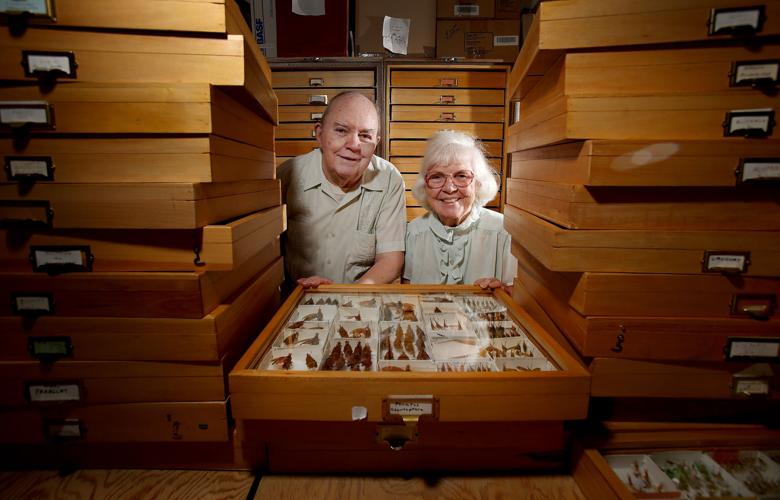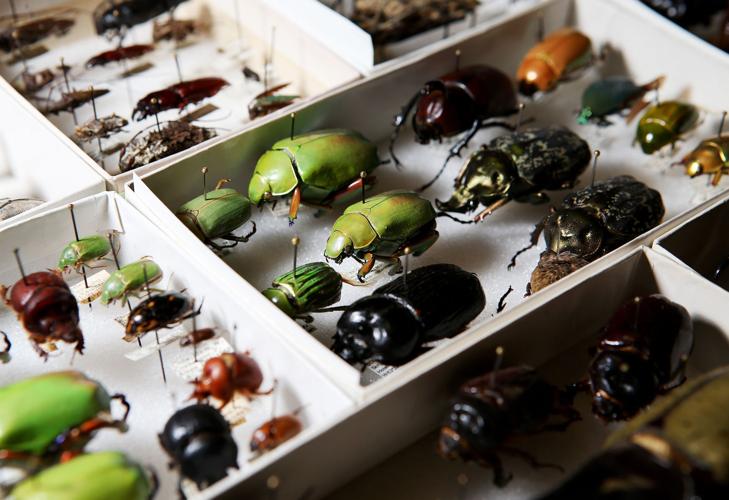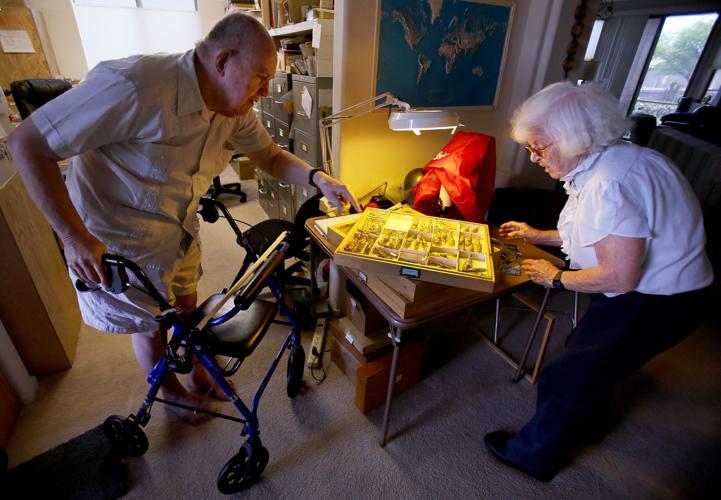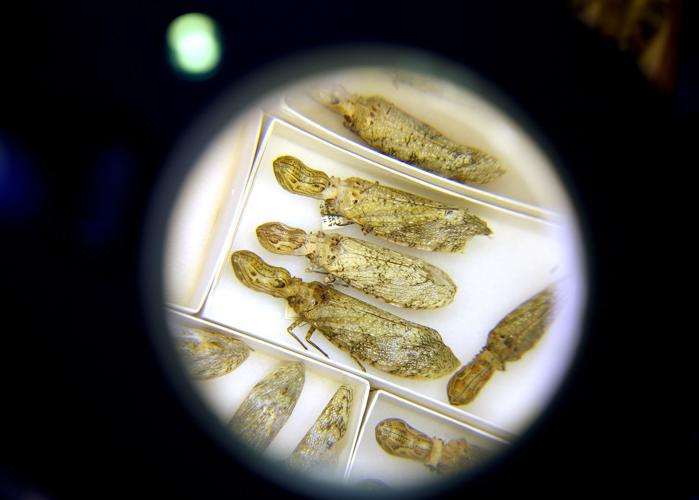Arizona State University is about to more than double its insect collection, courtesy of a gift from two Green Valley entomologists — who met while attending the University of Arizona.
The collection of 1.25 million insects is valued at more than $12 million.
The husband-wife entomology team of Lois and Charlie O’Brien said ASU’s insect museum is a good fit for their donation of weevils and plant hoppers from all of the world’s continents, collected during a 50-year partnership.
The ASU collection is curated by Nico Franz, a collaborator of his, said Charlie O’Brien. “He’s a weevil taxonomist and they have a new museum and space for the collection,” he said.
“He’s dealing with the entire world and the UA is mostly focused on Arizona.”
Charlie, 84, and Lois, 89, aren’t shipping off the entire collection to Tempe immediately. They’re still working on it.
They’ll save a bunch of unidentified specimens to keep them busy. Charlie O’Brien said they only work 10 hours a day in retirement, down from the 14-or-so they spent with their insects for much of their lives.
O’Brien, a former professor at Florida Agricultural and Mechanical University, is the weevil specialist.
Franz, director of the Hasbrouck Insect Collection at ASU, said O’Brien is the “world’s authority” on weevils.
“He has published close to 160 peer-reviewed papers and has two books that are the standard references for anyone in the weevil world,” said Franz.
Franz said he first met O’Brien when he was a master’s student at a university in Costa Rica. O’Brien helped him identify his weevil species. The two have been collaborators ever since.
Franz, now an associate professor at ASU’s School of Life Sciences, said the gift is important for him, the 10 graduate and undergraduate weevil researchers he supervises, and the ASU insect collection, which has about 750,000 specimens.
It’s a big addition and real boost for us,” he said.
Gene Hall, manager of the UA’s 2-million strong insect collection, said ASU is the appropriate place for the O’Briens’ donation. “It’s a perfect fit for the work Nico Franz is doing,” he said.
The UA Insect Collection focuses on the Sonoran Desert region, Hall said.
The O’Briens haven’t ignored the UA, he said.
“They have provided us a synoptic set of specimens for our collection, too,” he said.
Franz said weevils are important species from a pure science standpoint because of their evolutionary diversity. There are 65,000 identified species and the overall number is suspected to be around 220,000.
They also merit study because of their ability to damage crops and native plants, Franz said. The weevil lays its eggs inside plants and its larvae eat their way out.
Boll weevils are a longtime nemesis of cotton farmers. The bark beetle, which is a weevil, has decimated pine forests in the West, Franz said.
They can also be useful. O’Brien, while at Florida A&M, worked on eradicating invasive plants with specific weevil species.
His collection includes about half the known species, he said.
The O’Briens met in 1958, when Charlie was a master’s student and teaching assistant in entomology at the UA. Lois, with a master’s in chemistry, had left a job in medical technology to seek a more interesting field and settled on entomology.
Lois and Charlie both received their doctorates in entomology from the University of California, Berkeley.
Lois O’Brien said the couple had originally planned to return to Tucson after Charlie left his university post in Florida in 2004, but Charlie didn’t like the traffic. They moved to Green Valley and eventually added a room to their house for the insect collection.
The specimens are mounted in 1,000 glass-topped drawers that Lois made in shop at a community college in Florida.
“Charlie’s afraid of power saws,” she said. Charlie said his father and uncle both lost fingers in wood-working accidents. Lois said she once sliced through her fingernail and nearly to the bone, but still has all 10 digits.
Lois O’Brien’s specialty is the plant hopper, insects from the infraorder Fulgoromorpha, which contains 12,500 described species worldwide. She is one of the world’s authorities on them.
Plant hoppers take on the size and shape of leaves and plants in their environment, and that makes them more difficult to collect than weevils, Lois said. Still, she has managed to collect about 250,000 of them in 50 years of trips around the world. “Charlie would take one side of the trail and I’d take the other,” she said.
She has published more than 50 peer-reviewed papers on her discoveries and continues to add to her collection. A colleague recently brought her
some specimens to identify that were collected near Sonoita — “two species I’ve never collected in Arizona, even though they were described in 1937.”
Franz said the O’Briens have lived “a very purposeful and special life. They have worked for this for decades. The value of this collection is the work they put into it,” he said.
The O’Briens, for their part, balk at statements that sound like their work is done.
Charlie has continued to work, collect and research while shrugging off the symptoms of his Parkinson’s disease for 20 years. He is awaiting surgery that he expects will correct a back problem that has kept him in a wheelchair lately.
“We definitely still have a good life. We’re continuing to work and she’s publishing,” he said.







